GeoCA is a free software for the simulation and prediction of a large-scale pixel-based urban development process.
GeoCA has been well applied in the fields of urban development process analysis, urban ecological environment analysis and urban planning.
GeoCA supports multi-rule mining models, multi-spatial variable processing, geographic location alignment, and automatic memory control for large-scale urban development simulation.
Binary Files: Download or Download From Baidu Disk (Password: 4pc5)
User Manuals (in Chinese): Online Download
User Manuals (in English): Online Download
Important Notes:
Please download all GeoCA_V2.4.z01 ~ GeoCA_V2.4.z04 and GeoCA_V2.4.zip files before decompressing them, there are test data and executable files inside.
Please unzip the program to the full English file path. Double-click “GeoCA_UI.exe” in the program directory to start the GeoCA program.
If you encounter a program error, please install Microsoft Visual C++ 2015 Redistributable.
GeoCA v2.4 Functions:
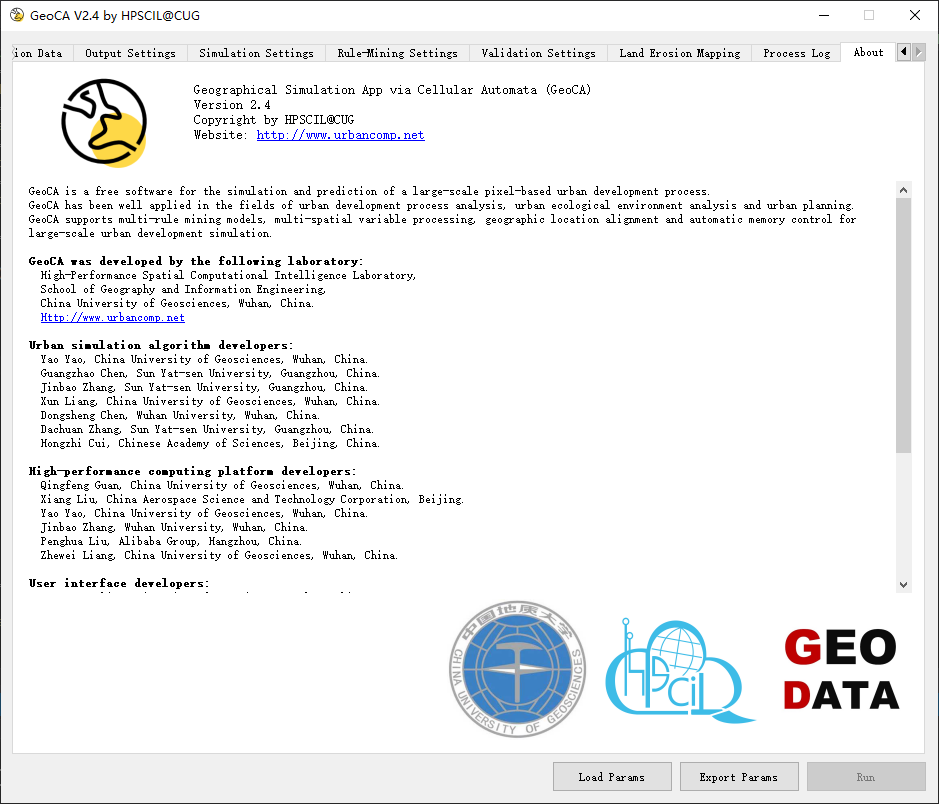
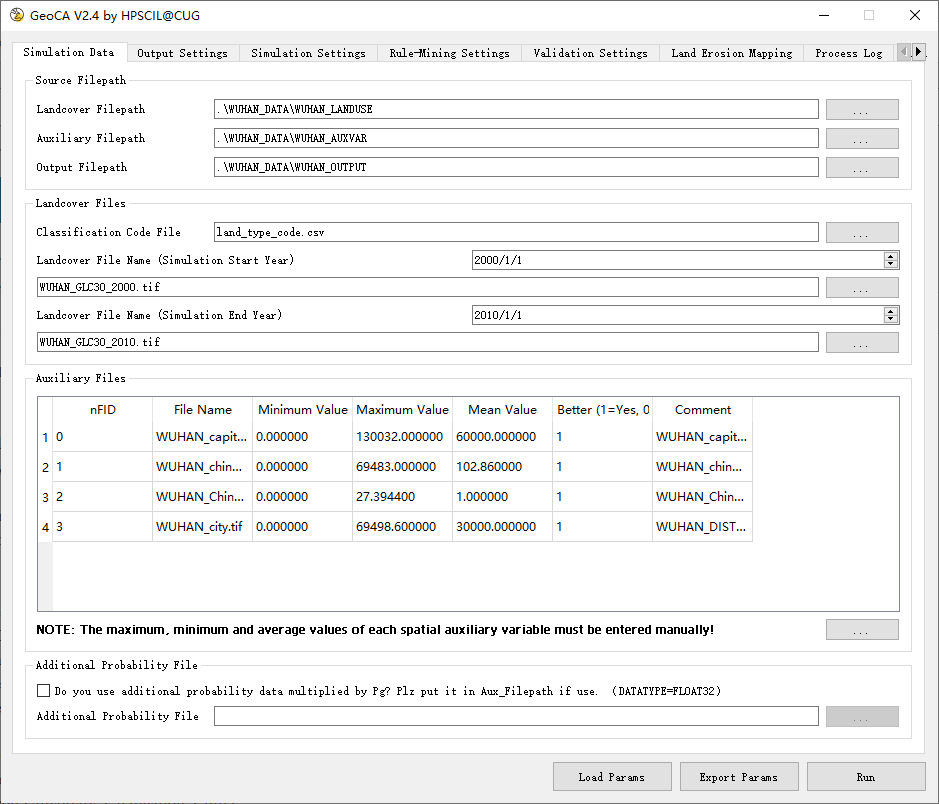
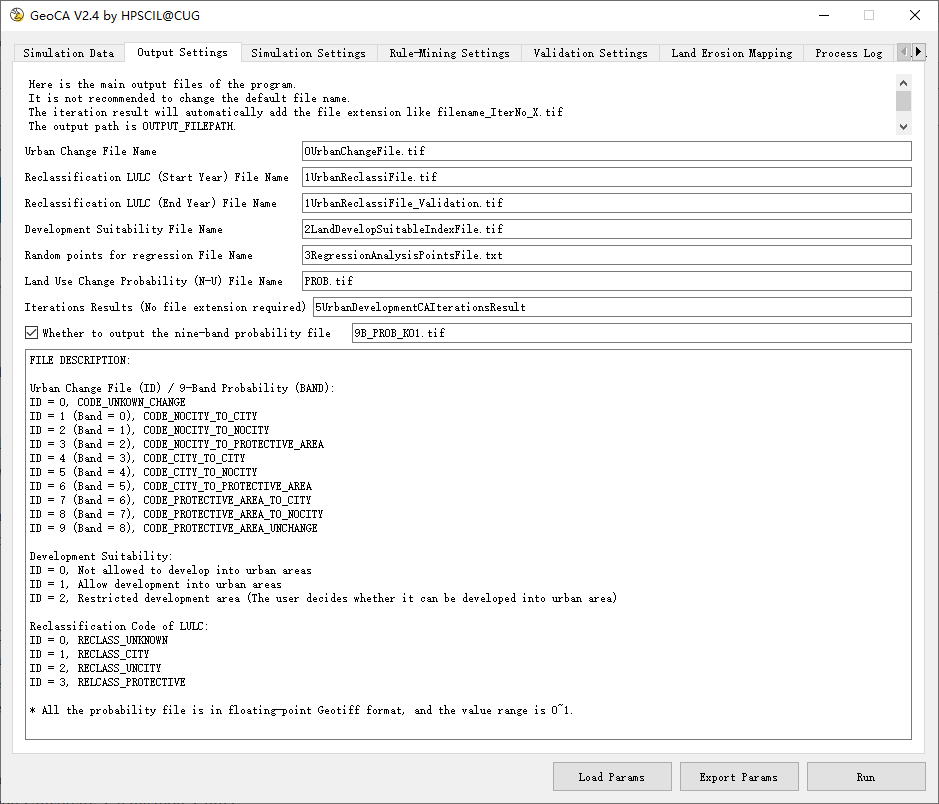
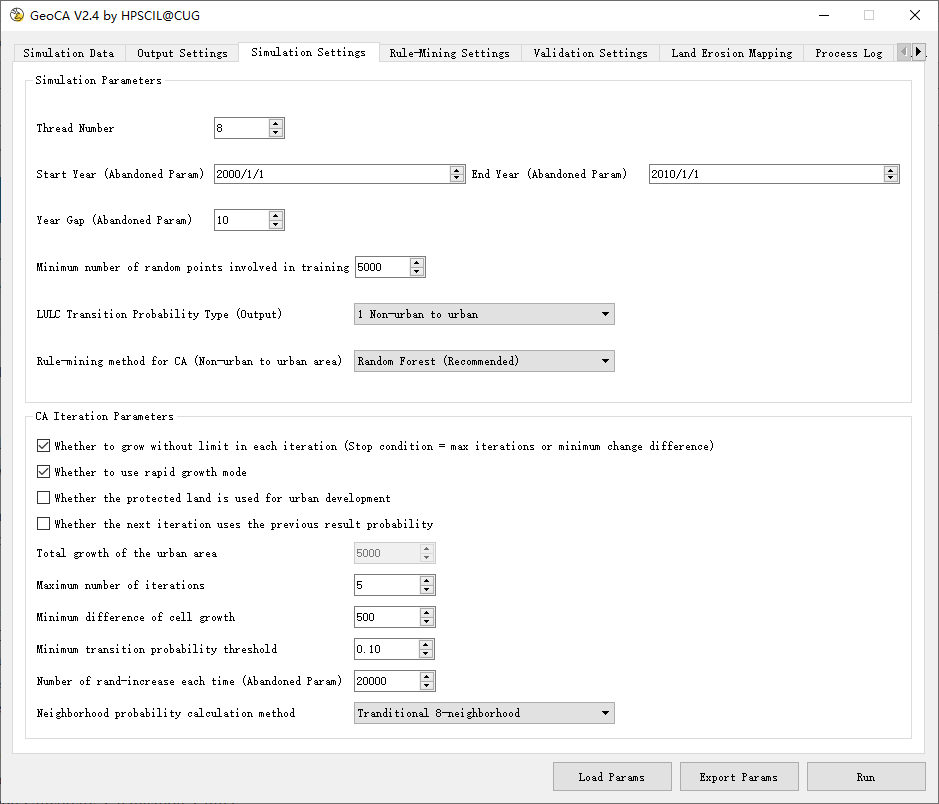
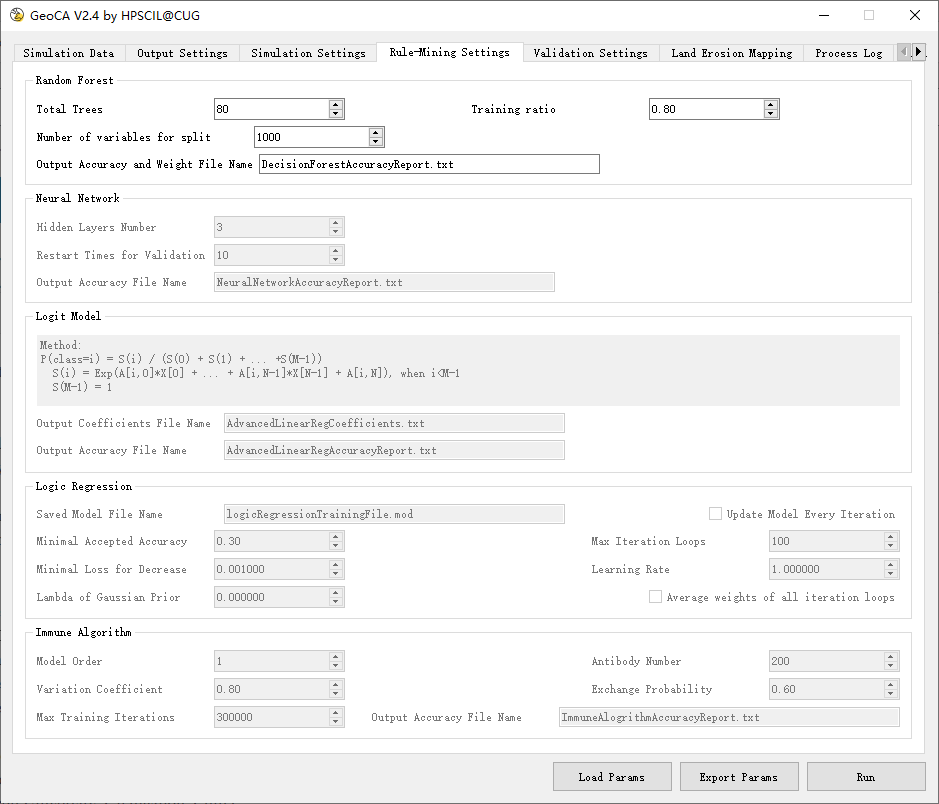
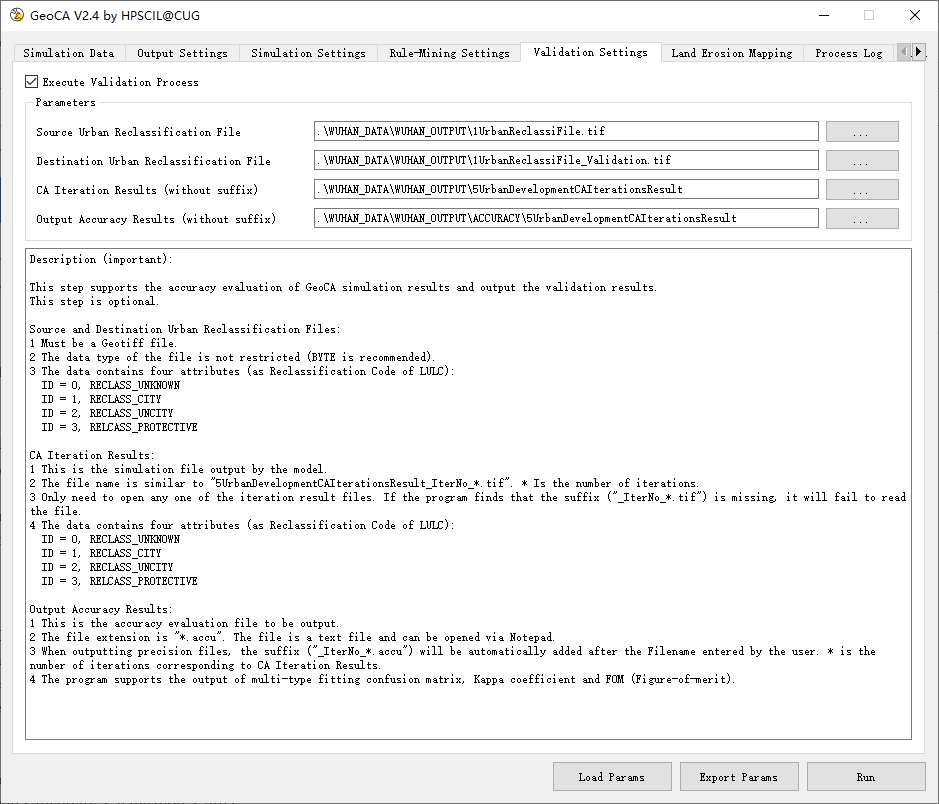
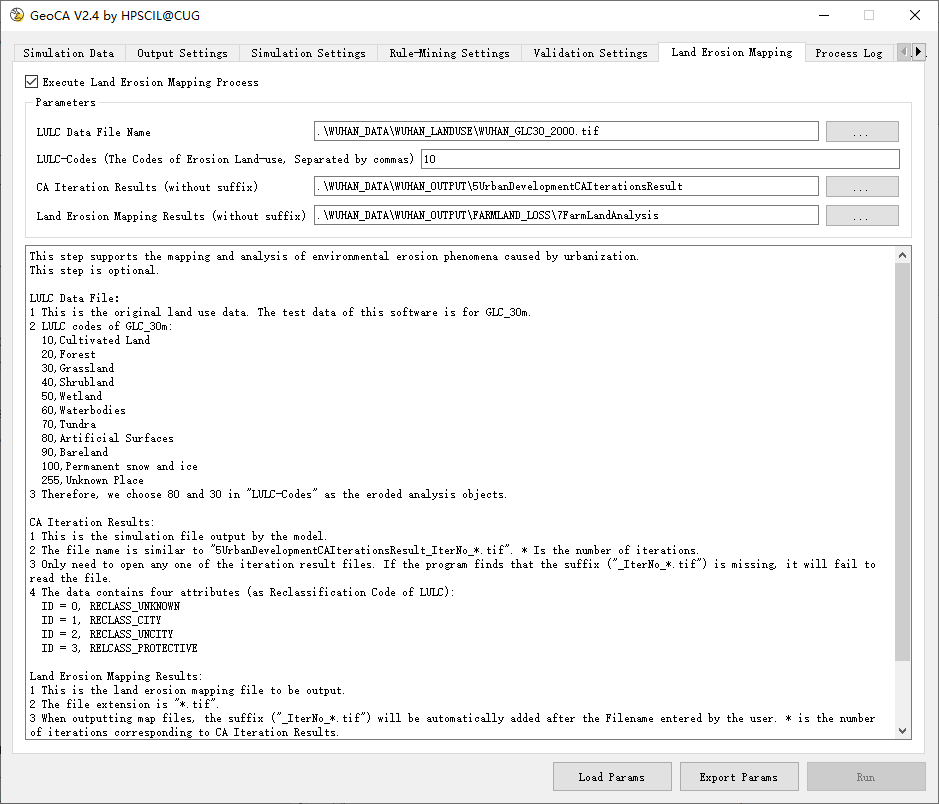
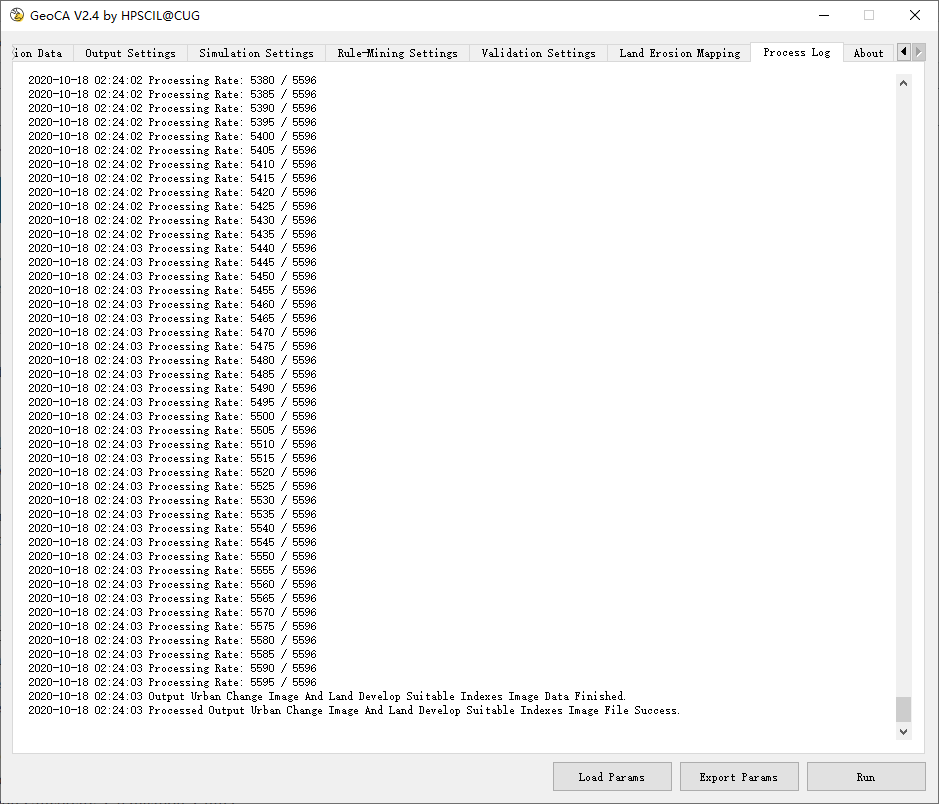
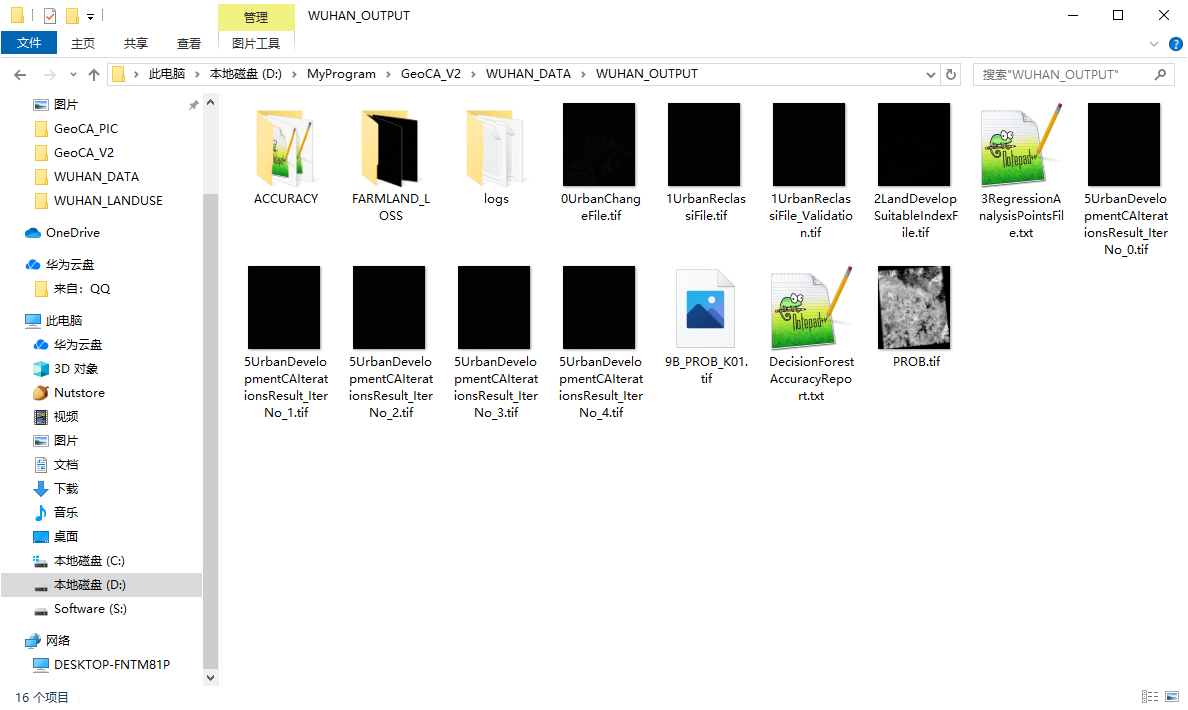
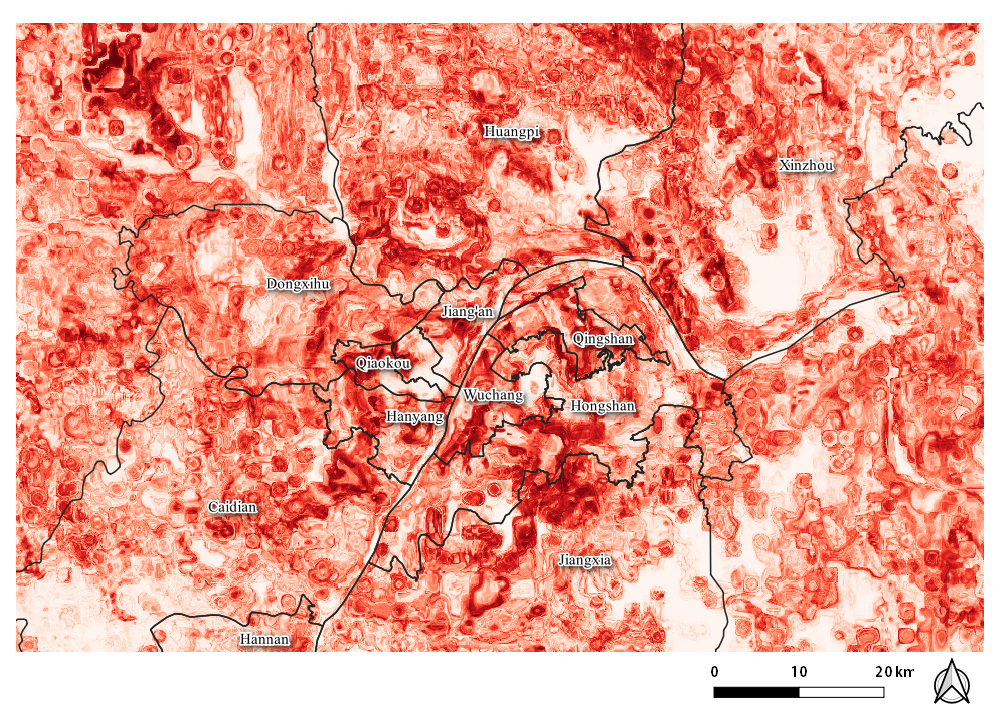
GeoCA is developed by the following laboratory:
High-Performance Spatial Computational Intelligence Laboratory,
School of Geography and Information Engineering,
China University of Geosciences, Wuhan, China.
Urban simulation algorithm developers:
Yao Yao, China University of Geosciences, Wuhan, China.
Guangzhao Chen, Sun Yat-sen University, Guangzhou, China.
Jinbao Zhang, Sun Yat-sen University, Guangzhou, China.
Xun Liang, China University of Geosciences, Wuhan, China.
Dongsheng Chen, Wuhan University, Wuhan, China.
Dachuan Zhang, Sun Yat-sen University, Guangzhou, China.
Hongzhi Cui, Chinese Academy of Sciences, Beijing, China.
High-performance computing platform developers:
Qingfeng Guan, China University of Geosciences, Wuhan, China.
Xiang Liu, China Aerospace Science and Technology Corporation, Beijing.
Yao Yao, China University of Geosciences, Wuhan, China.
Jinbao Zhang, Sun Yat-sen University, Guangzhou, China.
Penghua Liu, Alibaba Group, Hangzhou, China.
Zhewei Liang, China University of Geosciences, Wuhan, China.
User interface developers:
Yao Yao, China University of Geosciences, Wuhan, China.
Zhenhui Sun, China University of Geosciences, Wuhan, China.
Related references:
[1] Chen, D., Zhang, Y., Yao, Y., Hong, Y., Guan, Q., & Tu, W. (2019). Exploring the spatial differentiation of urbanization on two sides of the Hu Huanyong Line–based on nighttime light data and cellular automata. Applied Geography, 112, 102081.
[2] Zhang, D., Liu, X., Wu, X., Yao, Y., Wu, X., & Chen, Y. (2019). Multiple intra-urban land use simulations and driving factors analysis: a case study in Huicheng, China. GIScience & Remote Sensing, 56(2), 282-308.
[3] Yao, Y., Liu, X., Zhang, D., Liang, Z., & Zhang, Y. (2017). Simulation of Urban Expansion and Farmland Loss in China by Integrating Cellular Automata and Random Forest. arXiv preprint arXiv:1705.05651.
[4] He, Y., Ai, B., Yao, Y., & Zhong, F. (2015). Deriving urban dynamic evolution rules from self-adaptive cellular automata with multi-temporal remote sensing images. International Journal of Applied Earth Observation and Geoinformation, 38, 164-174.
[5] Li, X., & Yeh, A. G. O. (2002). Neural-network-based cellular automata for simulating multiple land use changes using GIS. International Journal of Geographical Information Science, 16(4), 323-343.
Q.E.D.









